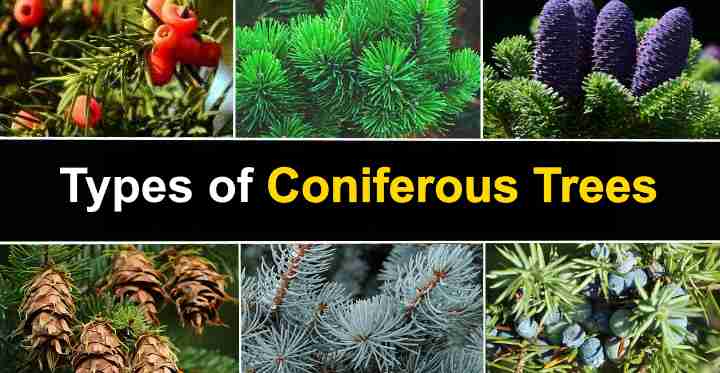Coniferous trees are a type of softwood tree that is distinguished by their needle-like leaves and seed-producing cones. While some conifers are deciduous and lose their leaves in the fall, most of them are evergreen trees. All coniferous trees belong to the plant class Coniferophyta or Pinophyta, and their cone-bearing seeds make them gymnosperms. There are over 600 species of conifers, which are divided into eight families.
Some of the most popular conifer tree types include pine trees, such as Scots pine, Douglas fir, and Eastern white pine. Black spruce, Colorado blue spruce, and Norway spruce are examples of deciduous spruces, while the Fraser fir, noble fir tree, and white fir are examples of evergreens that grow in forests.
Identifying different types of conifers can be challenging as they look quite similar. However, by examining the form of the needle leaves, cones, bark, and the configuration of the tree, you can distinguish the various species of evergreen softwoods. For example, firs have softer needles than spruce trees and have evergreen foliage that is pointed and sharp.
Difference Between Deciduous and Coniferous Trees

The main difference between coniferous and deciduous trees is the shedding of leaves in autumn. Most deciduous trees have broad leaves that change color to yellow, brown or red before falling off in autumn. On the other hand, conifers are evergreen trees and keep their foliage throughout the year. While most conifers are evergreens, there are some deciduous conifers, such as larches, tamaracks, and dawn redwoods, that lose their needle-like leaves in the fall. Conifers, also known as gymnosperms, include trees such as pine, spruce, fir, and yews, which have cones for reproduction.
Conifer Leaves
The needle-like foliage of conifers sets them apart from deciduous broadleaved trees. Thin leaves that look like needles may be seen on some conifer tree species, such as pine, fir, spruce, and larch. Soft scale-like leaves may be seen on other coniferous plants such as juniper, cypress, and cedar. Individual leaves do not fall from these conifers when they lose their foliage.
Conifer Identification
A quick way to distinguish between various conifer species is to observe their needles. Pines have needles that grow in pairs on a stem, with two to five bundles in total. In contrast, spruce and fir trees have single needles.
Differentiating between spruce and fir trees is relatively straightforward. Spruce needles are stiff and pointed, while fir needles are flexible and delicate. As you become more familiar with various coniferous species, you can learn more about how to identify them.
Types of Conifer Trees (Conifer Trees List) – Overview

The most common types of conifer plants that grow in evergreen woods are briefly discussed below. You’ll discover a lot more about the most common types of conifers later in the article.
Cedars and false cedars
Evergreen coniferous trees belonging to the Cedrus genus are known as cedars, and they have tightly clustered needles that are typically 1 to 2 inches (2.5 to 5 cm) long. Some cedars also have barrel-shaped cones that point upward. However, not all conifers referred to as cedars belong to the Cedrus family. False cedars can be found in the Thuja, Calocedrus, and Juniperus genera, among others. Although some of these conifer species have “cedar” in their common names, they are not members of the Cedrus family.
Pine and fir trees
There are over 100 species of pine trees (Pinus), with needles that grow in clusters of two to five. Some pine species have needles that grow in clusters of seven. Pine cones are commonly associated with the classic conical shape. Fir trees are related to pine trees and have thin, needle-like leaves. The cones of fir trees are tall and cylindrical, resembling candles on stems.
Spruce and larch trees
There are around 35 different species of spruce trees (Picea), which have sharp needle-like leaves. Spruces and firs share a similar appearance, but the needles of spruce trees are stiffer, and their cones hang down. The needle-like foliage of larch conifers (Larix) starts turning yellow in the fall and falls off before the tree becomes dormant. Larch cones are small, oval, or egg-shaped.
Cypress and hemlock
Cypress trees (Cupressaceae) They generally have sharp, scale-like needles leaves and grow well in warmer regions. Cypress cones, which look like large, plump acorns, are woody and leathery.
Hemlock conifers (Tsuga) Evergreen conifers have tiny pegs with short needles that grow on their leaves. The length of a hemlock cone varies.
Junipers and yews
The smell of juniper conifers (Juniperus) is characteristic of the Cupressaceae family. They have needle-like or scale-like foliage depending on the species. They have fleshy woody oval fruit-like cones. The leaves of yews (Taxaceae) are pointed, soft needle-like, and dark green. Yew trees have a characteristic that their female trees’ cones resemble round red berries.
Redwoods and sequoias
Some of the world’s tallest trees are redwoods and sequoias (Sequoioideae). They are also razor-sharp, and their leaves look like tiny swords. Cones are one of the most difficult cones found in the Coniferophyta family, and they’re egg-shaped.
Types of Coniferous Trees with Their Picture and Name
Let’s examine some of the most common coniferous tree types that thrive in woods in further depth.
Atlantic White Cedar (Chamaecyparis thyoides)
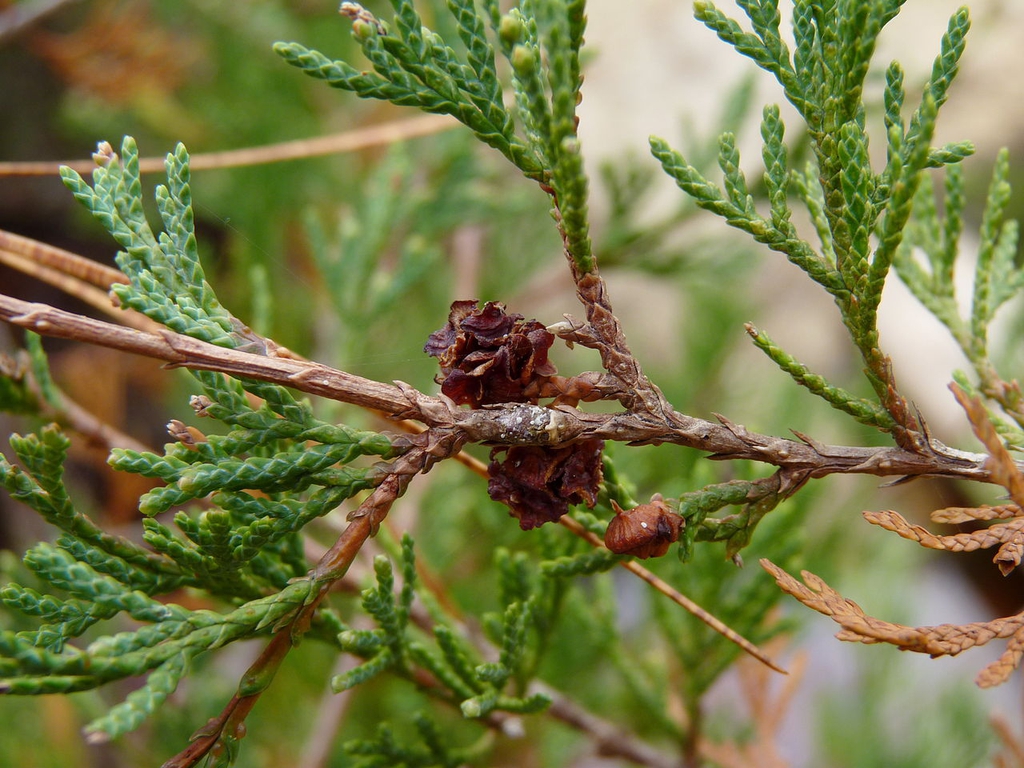
The Atlantic white cedar, also known as the Southern white cedar, is a coniferous tree that is native to the East Coast of the United States. It is characterized by its scale-like green or blue-green leaves and spherical cones. The majority of the tree’s foliage is visible, with the reddish-brown bark clearly visible at the top section. These trees have a short lifespan and can reach heights of 66 to 92 feet (20 to 28 meters).
Douglas Fir (Pseudotsuga menziesii)
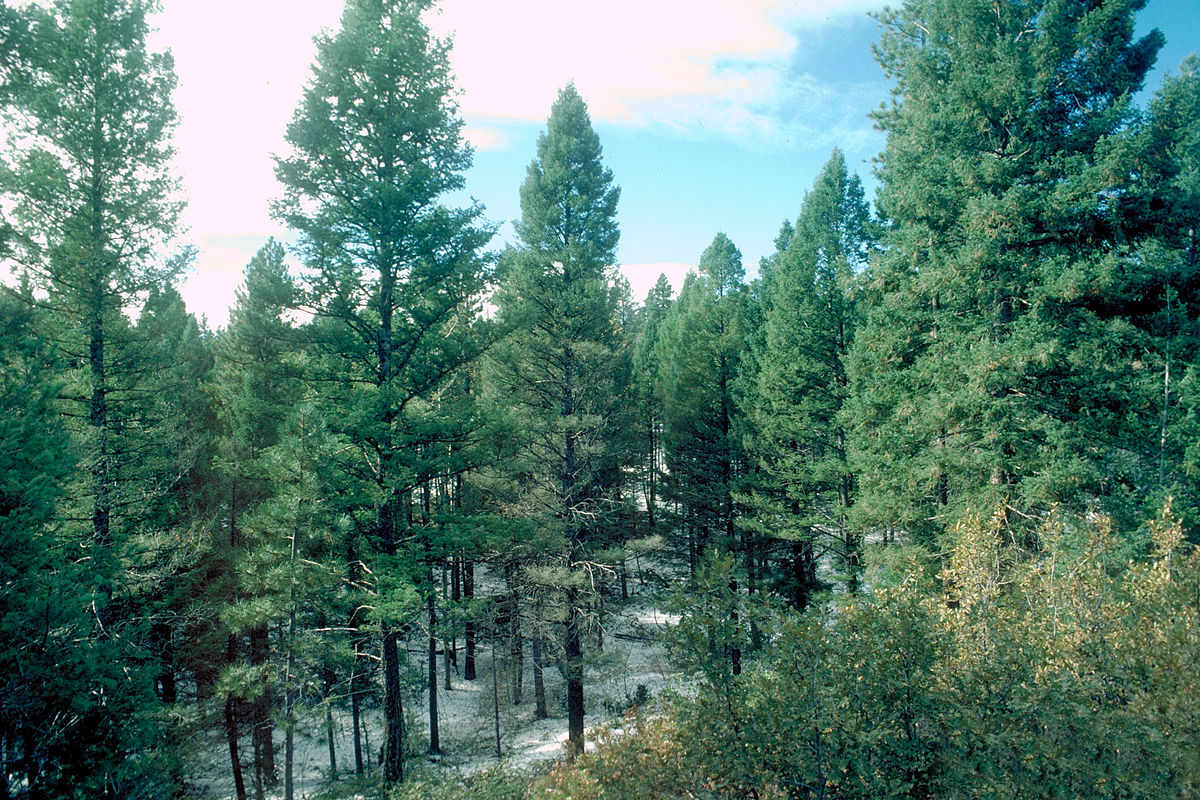
Despite its name, this commonly-found tree is actually classified as a fir tree. Douglas firs can grow up to 330 feet (100 meters) tall, making them one of the largest conifers. The Douglas fir’s leaves, which resemble fir needles, are soft and flat and surround the branches. The cones hang down from the branches like all other fir trees. Despite being classified as a softwood species, the Douglas fir’s coniferous wood is strong and sturdy, making it a popular choice in the furniture industry.
Lawson’s Cypress (Chamaecyparis lawsoniana)
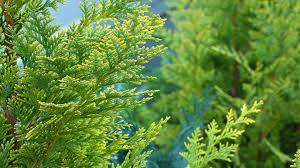
This beautiful conifer with long straight trunks, feathery leaves, and scale-like leaves is sometimes referred to as the Port Orford cedar. These cedars may grow to a height of 197 feet (60 meters) when fully grown. Conifers produce tiny, globe-shaped seed cones. The false cypress classes of coniferous trees include this evergreen tree.
Northern White Cedar (Thuja occidentalis)
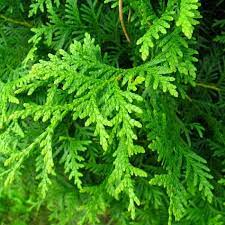
The Arborvitae, also known as the Northern white Thuja cedar, is a beautiful and decorative conifer tree that features thick, feathery, and delicate leaves. It is commonly cultivated in parks and gardens, where it grows in a conical shape. The Arborvitae belongs to the Cupressaceae family, and like other trees in this family, it has needle-like leaves that are scaly and arranged in a fan shape on the branches. The seed cones of this species are relatively small when compared to those of other conifers.
Alaska cedar (Cupressus nootkatensis)
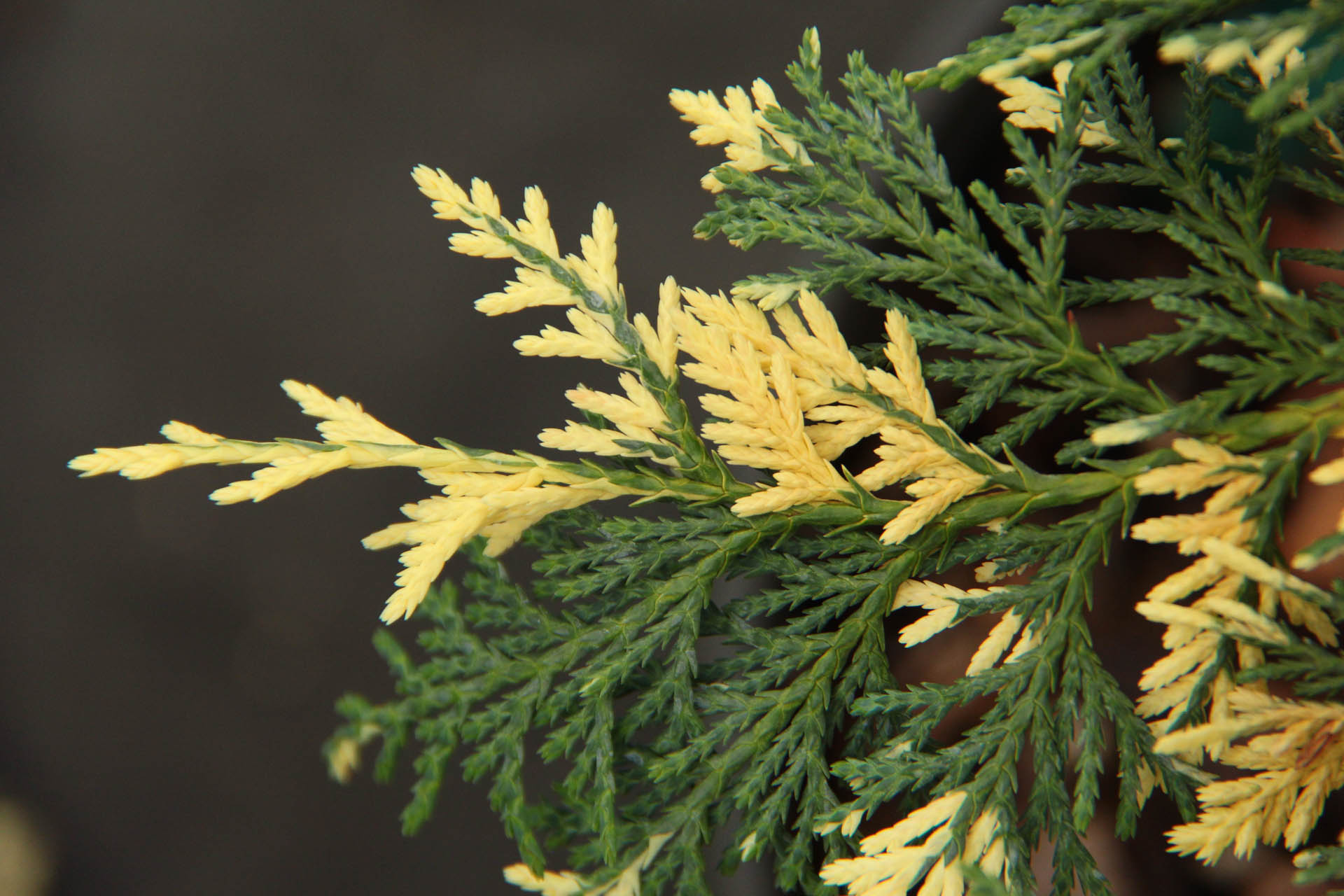
The Alaska cedar, a type of false cedar, is an evergreen conifer tree with drooping branches, flat sprays of foliage, and scale-like leaves. This cypress tree is also known as the Nootka cypress, yellow cypress, and Alaska yellow cedar.
White Spruce (Picea glauca)
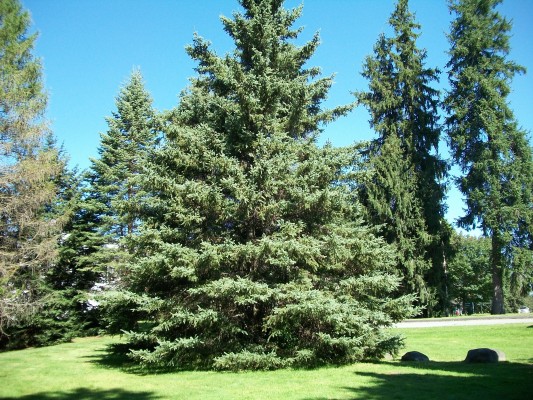
The white spruce is a massive evergreen coniferous tree that grows in cold northern regions. It can grow up to 50 to 100 feet (15 to 30 meters) tall. These spruce trees produce brown-colored seed cones that resemble long cylinders, along with needle-like foliage. The cone-shaped crown of these conifers in the forests helps in identifying them.
Black Spruce (Picea mariana)
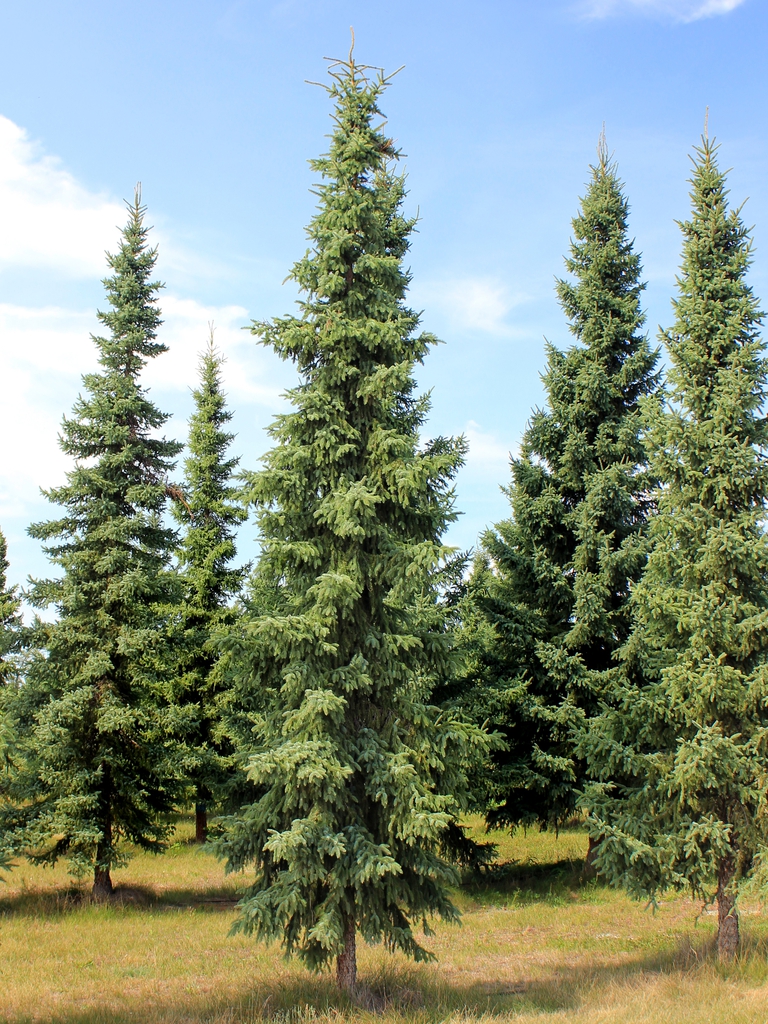
Black spruce is a type of coniferous tree that thrives in areas with cold winters and cool summers, like other Picea species. The branches are covered with stiff needles that have a bluish-green hue. The tree’s cones are pendulous and typically have a purple color. This slow-growing conifer is one of the smallest spruce types.
Colorado Blue Spruce (Picea pungens)
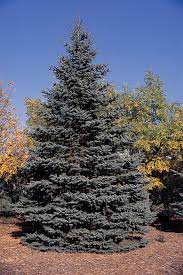
Blue spruce trees, particularly the Colorado blue spruce, are known for their ornamental coniferous nature. These trees have a distinct conical shape due to their horizontal branches that grow wider at the base than at the top. The blue-green needle leaves give the evergreen conifer a distinctive pointed appearance.
Engelmann Spruce (Picea engelmannii)

Engelmann spruce is a type of conifer that grows at high altitudes, typically above 3,000 feet (900 meters). This conifer has a tall, slender shape with sparse branching up the trunk, giving it a sparsely branched appearance. Its needle-like leaves have a blue-green hue and a pointed tip. The branches of Engelmann spruce are adorned with cones that have thin scales.
Red Spruce (Picea rubens)
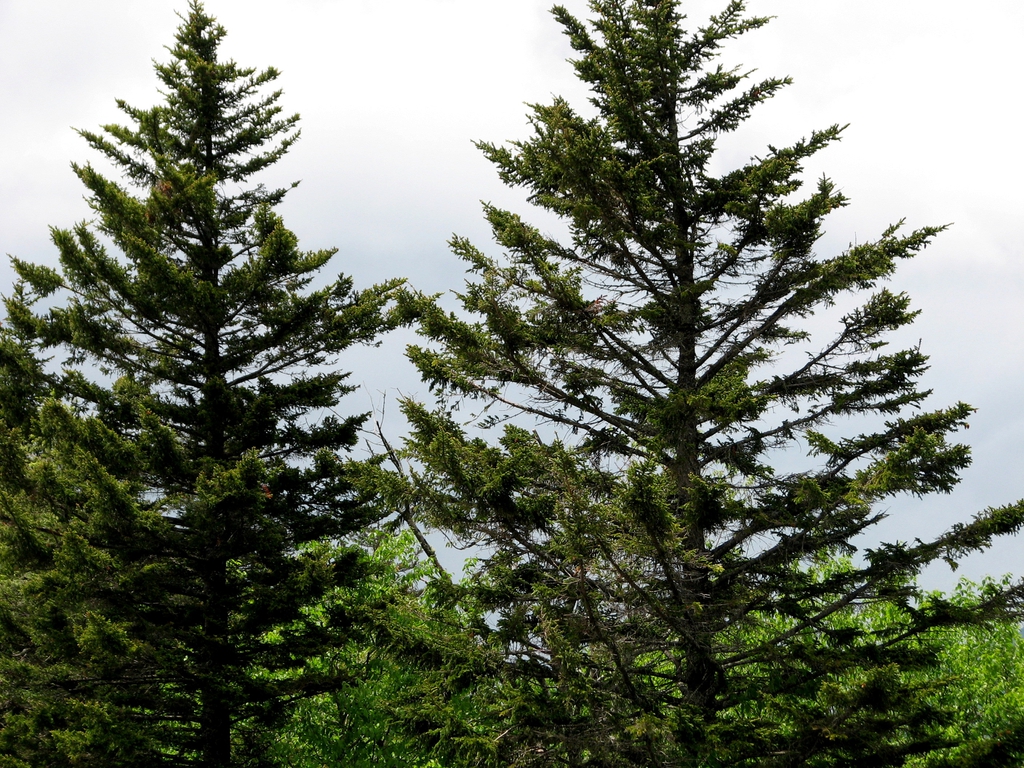
This conifer tree has needle-leaves that are green in color with streaks of yellow and is also known as the West Virginia spruce or yellow spruce. The common name for this tree comes from the reddish bark of the spruce tree. In the shape of a cylinder and reddish-brown color, red spruce cones are hard and stiff. The cones are pendulous, just like those of other spruce trees.
Fraser fir (Abies fraseri)
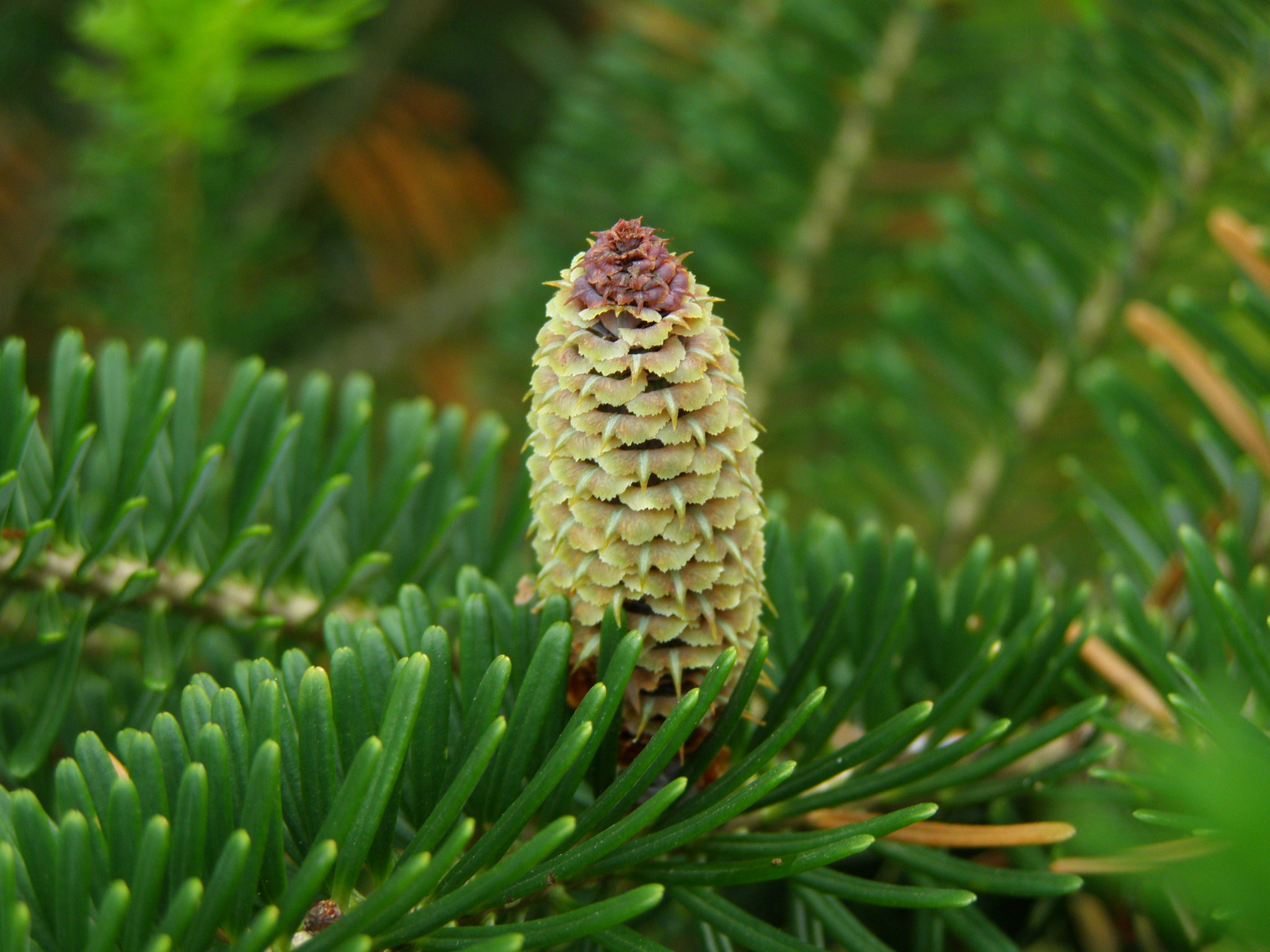
Fraser firs are small coniferous trees that have a distinctive conical shape and green needles. Their needle-covered branches are similar to spruce needles, but with a softer texture. The fir cones are medium-sized and cylindrical, growing upright like most fir trees.
Grand Fir (Abies grandis)
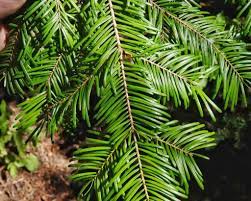
The grand fir tree, as its name suggests, is a majestic coniferous tree that can reach up to 230 feet (70 meters) tall, making it the tallest species of fir tree in the world. The needles of the grand fir tree are flat, glossy green, and have white stripes underneath. The cones of this fir tree are oblong and conical in shape and are typically lime-green in color. In their juvenile form, grand fir trees are a popular choice for Christmas trees.
Pacific Silver Fir (Abies amabilis)

The Pacific silver fir is a type of coniferous tree with flat needle leaves that have a white upper surface and a matte dark green underside, similar to the grand fir but smaller in size. The wood of these conifers is considered inferior, and is often used in the paper industry. Pacific silver firs are also popular as Christmas trees and can be found in many parks throughout the Pacific Northwest region.
Eastern Larch (Larix laricina)

The deciduous conifer tree, also known as tamarack, black larch, or American larch, is indigenous to North America. These conifers have sparse needle-like leaves that are a light bluish-green hue, and in the fall, they turn bright yellow before shedding their leaves. The unusual seed cones of these trees resemble either red berries or round yellow buds depending on whether the tree is male or female.
Eastern White Pine Tree (Pinus strobus)
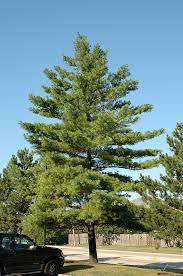
The Eastern white pine is a tall, broad-spreading coniferous tree with a wide range. The light gray color of the bark, which appears to be white, is what gives the term “white pine” its name. This pine tree has sparse foliage since branches are evenly spaced on the trunk. Fine needles with a blue-green color cluster in bunches of five. The branches are covered in long, slender pine cones.
Norway Pine (Pinus resinosa)
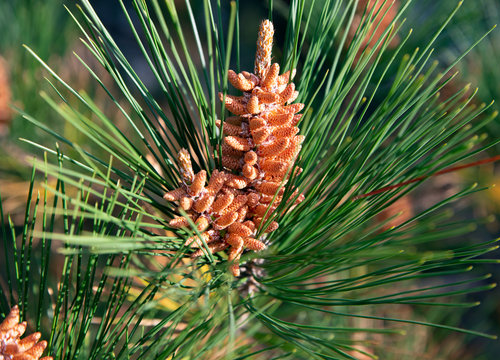
Red pine or Norway pine is a coniferous tree native to North America with a slender, straight stem that can grow up to 115 feet (35 meters) tall. The common name of this conifer species seems to have originated from Scandinavian immigrants. These evergreen trees have needles that grow in pairs and have a dark green color. The cones of the red pine are typically oval-shaped, which is a common feature of many pine trees.
Norway Spruce (Picea abies)
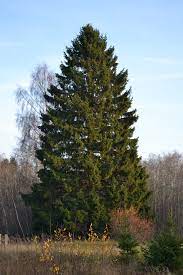
The Norway spruce is a species of conifer native to Northern Europe, which is able to withstand harsh winter conditions. Its upward-pointing branches give it a conical shape, also known as fastigiate branches. This characteristic has made the Norway spruce one of the most popular choices for Christmas trees. The spruce’s needles are hard and encircle the branches, while the elongated oval cones are brown and hang down from the branches, similar to other spruce species.
Loblolly pine (Pinus taeda)

Long straight trunks with no branches for the majority of their length characterize loblolly pines, which thrive in warmer climes around the globe. Soft, needle-like leaves grow in small bunches on the reddish stems, forming the crown-shaped foliage. The green color of the seed cones gives them a unique cone form.
Pinyon Pines (Pinus edulis)
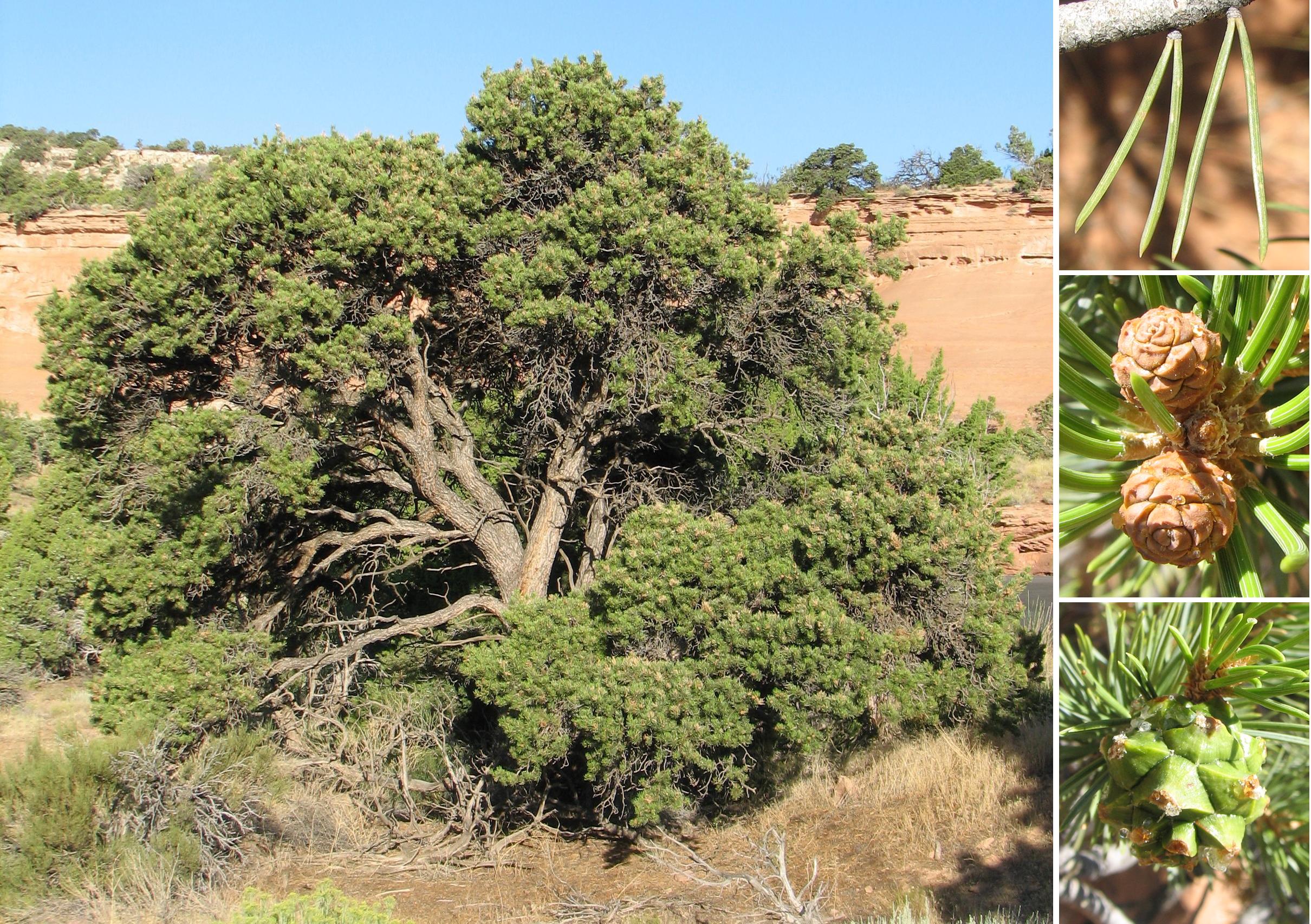
Pinyon pine trees are highly valued for their edible pine nuts and are also popular as a source of firewood because of their distinctive aroma. The needles on this coniferous tree grow in pairs, and it is relatively small in size, typically reaching heights of 33-66 feet (10-20 meters). Pinyon pine trees grow well in hot and dry environments and are predominantly found in North America.
Ponderosa Pine (Pinus ponderosa)
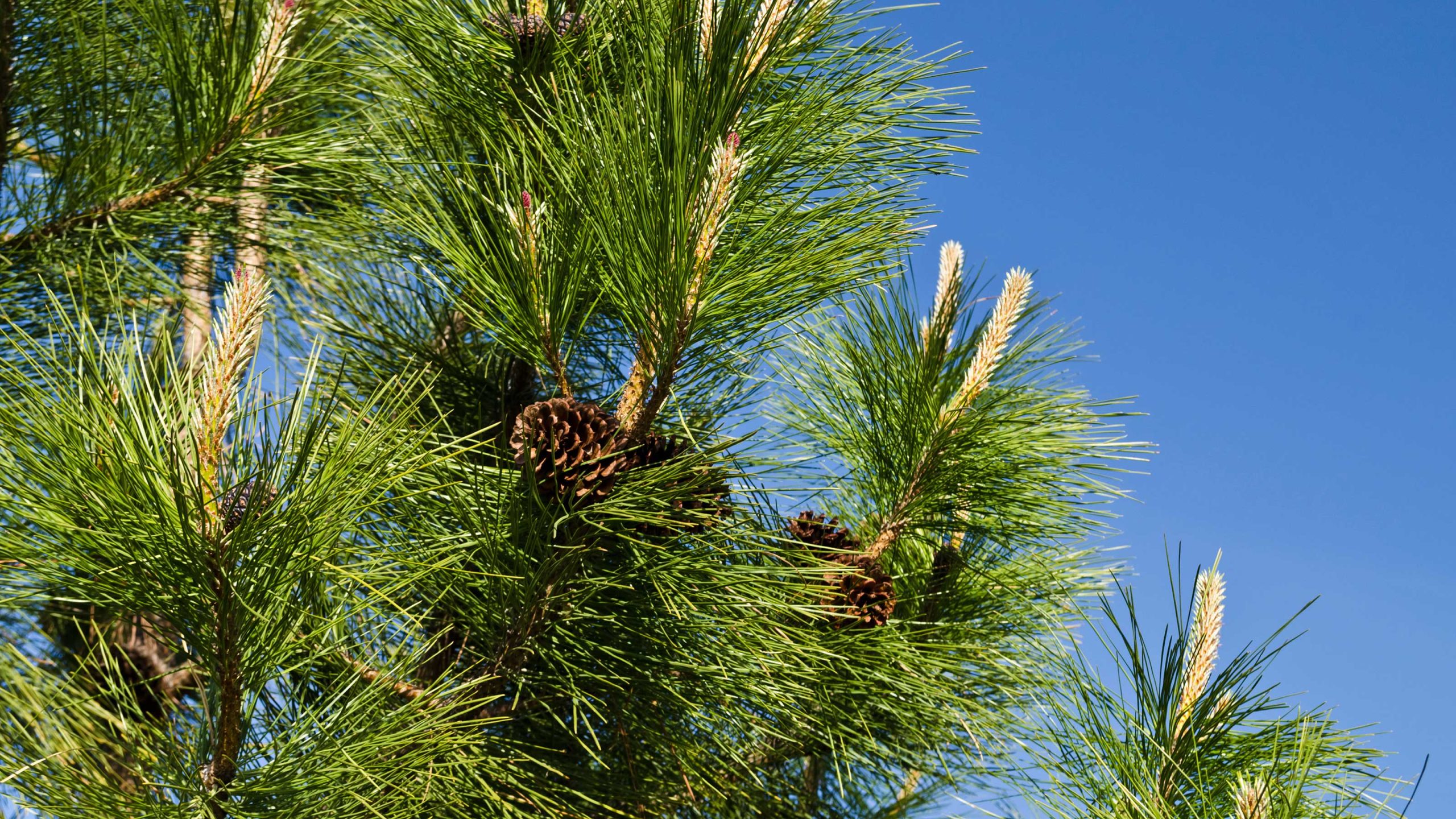
Ponderosa pines are a common kind of conifer in the Pinus genus. The thick wood of this coniferous tree species is the inspiration for its Latin name. This conifer has a long, straight trunk and sagging branches that create a cone-shaped crown, and it is also known as the bull pine, blackjack pine, and filipinus pine. Bright-green, three-bunched needles cover the pine tree. Little pine cones are crimson and cylindrical.
